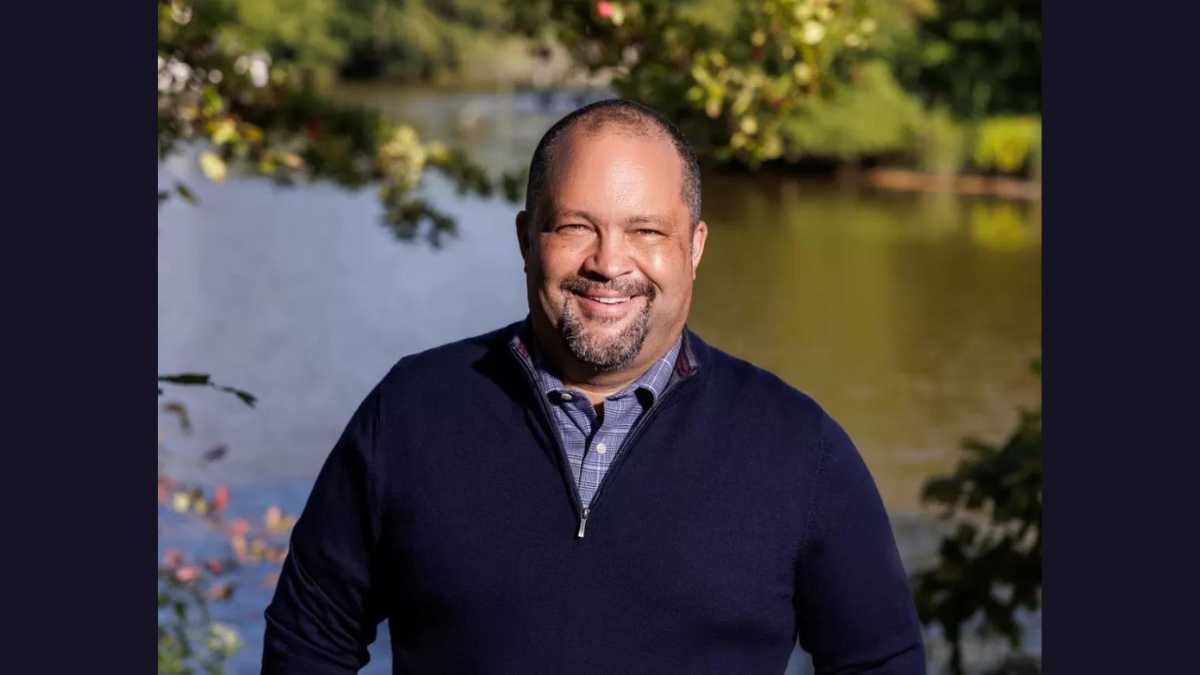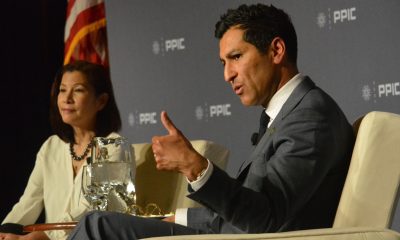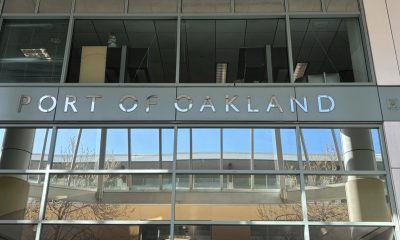#NNPA BlackPress
COMMENTARY: How the Clean Energy Win in Michigan Provides a Roadmap for Other States
CHICAGO DEFENDER — Michigan’s codified commitment to fighting the pollution driving climate change is inherently good news for the communities of color that bear a disproportionate burden of the effects of the crisis, and the benefits go even further. New incentives in the bills to make buildings energy efficient will have an outsized positive impact for these communities, where a higher number of the homes are old, drafty, and not energy efficient.
The post COMMENTARY: How the Clean Energy Win in Michigan Provides a Roadmap for Other States first appeared on BlackPressUSA.

By Ben Jealous | Chicago Defender
If you live in Detroit or another part of Michigan where there’s a looming threat of bodily harm from fossil fuel pollution, it just got a little easier to breathe a sigh of relief … and to maintain your ability to breathe in general.
The historic Clean Energy Future Package and Clean Energy and Jobs Act, just recently signed into law by Michigan Governor Gretchen Whitmer, will greatly accelerate the state’s transition to the exclusive use of clean power sources like wind and solar.
That’s a victory for Michiganders and for the country’s goals of slashing the pollution that fuels climate change and harms our health. It’s also a major win for environmental justice, hard-hit communities in a state, and workers.
Michigan’s codified commitment to fighting the pollution driving climate change is inherently good news for the communities of color that bear a disproportionate burden of the effects of the crisis, and the benefits go even further. New incentives in the bills to make buildings energy efficient will have an outsized positive impact for these communities, where a higher number of the homes are old, drafty, and not energy efficient.
Finally, air pollution from many of the power and industrial plants, which are also disproportionately located in these communities, will be reduced by the state’s mandates for clean energy. This is huge for all Michiganders, and especially for those communities where public health is suffering from pollution.
The Detroit tri-cities area – encompassing Detroit, River Rouge, and Ecorse – and other parts of Michigan experiencing the worst air pollution are predominantly Black or Black and Latino. The Harvard Medical School Primary Care Review has pointed out that within the two zip codes that make up Southwest Detroit alone, “there are more than 150 facilities that emit toxic fumes, gasses, chemicals, and particulate matter.”
Black residents make up 80% of one of those zip codes, 48217, a statistic noted at an October gathering of activists, near the Marathon Petroleum Corporation’s refinery in Southwest Detroit, by Ember McCoy, a Ph.D. candidate at the University of Michigan’s School for Environment and Sustainability, in discussing the disproportionate impact of air pollution on the city’s residents.
According to 2019 figures from the Michigan Department of Health and Human Services, adult residents of Detroit were 46% more likely to have asthma than the statewide average. And within Detroit, Black residents were hospitalized for asthma three times as often as white residents. And that’s just asthma.
The National Institute of Environmental Health Sciences says this type of pollution is also known to increase rates of cancer, cardiovascular disease, neurological and immune disorders, and other health concerns. And, as McCoy also noted at that Detroit panel discussion, “certain pollutants, when combined, as they are in the air, are worse together than they are alone individually … but we still measure them and regulate them as if they’re acting separately.”
So, yes, a lot still needs to be done. Especially in terms of how these chemical and particulate pollutants are regulated at the federal level. Still, we shouldn’t lose sight of the positive action that states like Michigan are taking right now and the example it sets for other states.
There’s a lot to be hopeful about in the clean energy bills’ impact on public health. The bills also set a powerful example for how to help ensure a just transition away from fossil fuels with strong protections for labor. Part of the clean energy package is the creation of the Community and Worker Economic Transition Office.
The office will develop a plan and coordinate efforts to address the impact on workers in the shift from fossil fuels to renewables, helping to ensure that no worker is left behind. By delivering historic federal action in the Inflation Reduction Act, the Biden administration has already given states a powerful way to capitalize on massive federal investments in their economies and a green future for us all.
That’s exactly what Michigan is doing, and doing it right. In addition to the billions that Michigan has already secured in federal investment dollars, a recent report by the Michigan-based 5 Lakes Energy shows that passing the 100% clean energy legislation could mean over 160,000 additional quality jobs over the next decade and $7.8 billion more in investments by 2050, which is more than twice what Michigan would expect to receive without enacting these policies.
Thanks to the IRA, states now have an unprecedented opportunity to address the harm done by climate change while also jumpstarting economic development, creating jobs, moving towards energy independence, improving the health and lives of their residents, and leading on environmental justice.
Ben Jealous is executive director of the Sierra Club, professor of practice at the University of Pennsylvania and author of “Never Forget Our People Were Always Free.”
The post How the Clean Energy Win in Michigan Provides a Roadmap for Other States appeared first on Chicago Defender.
The post COMMENTARY: How the Clean Energy Win in Michigan Provides a Roadmap for Other States first appeared on BlackPressUSA.
#NNPA BlackPress
IN MEMORIAM: Ramona Edelin, Influential Activist and Education Advocate, Dies at 78
NNPA NEWSWIRE — Born on September 4, 1945, in Los Angeles, California, activist Ramona Edelin’s early years were marked by a commitment to education and social justice. According to her HistoryMakers biography, after graduating from Fisk University with a Bachelor’s degree in 1967, she pursued further studies at the University of East Anglia in England. She earned her master’s degree before completing her Ph.D. at Boston University in 1981.
The post IN MEMORIAM: Ramona Edelin, Influential Activist and Education Advocate, Dies at 78 first appeared on BlackPressUSA.

By Stacy M. Brown, NNPA Newswire Senior National Correspondent
@StacyBrownMedia
Once upon a time, Black Americans were simply known as colored people, or Negroes. That is until Ramona Edelin came along. The activist, renowned for her pivotal roles in advancing civil rights, education reform, and community empowerment, died at her D.C. residence last month at the age of 78. Her death, finally confirmed this week by Barnaby Towns, a communications strategist who collaborated with Dr. Edelin, was attributed to cancer.
Born on September 4, 1945, in Los Angeles, California, Edelin’s early years were marked by a commitment to education and social justice. According to her HistoryMakers biography, after graduating from Fisk University with a Bachelor’s degree in 1967, she pursued further studies at the University of East Anglia in England. She earned her master’s degree before completing her Ph.D. at Boston University in 1981.
Edelin’s contributions to academia and activism were manifold. She was pivotal in popularizing the term “African American” alongside Rev. Jesse L. Jackson in the late 1980s.
Jackson had announced the preference for “African American,” speaking for summit organizers that included Dr. Edelin. “Just as we were called Colored, but were not that, and then Negro, but not that, to be called Black is just as baseless,” he said, adding that “African American” “has cultural integrity” and “puts us in our proper historical context.”
Later, Edelin told Ebony magazine, “Calling ourselves African Americans is the first step in the cultural offensive,” while linking the name change to a “cultural renaissance” in which Black Americans reconnected with their history and heritage.
“Who are we if we don’t acknowledge our motherland?” she asked later. “When a child in a ghetto calls himself African American, immediately he’s international. You’ve taken him from the ghetto and put him on the globe.”
The HistoryMakers bio noted that Edelin’s academic pursuits led her to found and chair the Department of African American Studies at Northeastern University, where she established herself as a leading voice.
Transitioning from academia to advocacy, Edelin joined the National Urban Coalition in 1977, eventually ascending to president and CEO. During her tenure, she spearheaded initiatives such as the “Say Yes to a Youngster’s Future” program, which provided crucial support in math, science, and technology to youth and teachers of color in urban areas. Her biography noted that Edelin’s efforts extended nationwide through partnerships with organizations like the National Science Foundation and the United States Department of Education.
President Bill Clinton recognized Edelin’s expertise by appointing her to the Presidential Board on Historically Black Colleges and Universities in 1998. She also co-founded and served as treasurer of the Black Leadership Forum, solidifying her standing as a respected leader in African American communities.
Beyond her professional achievements, Edelin dedicated herself to numerous boards and committees, including chairing the District of Columbia Educational Goals 2000 Panel and contributing to the Federal Advisory Committee for the Black Community Crusade for Children.
Throughout her life, Edelin received widespread recognition for her contributions. Ebony magazine honored her as one of the 100 Most Influential Black Americans, and she received prestigious awards such as the Southern Christian Leadership Award for Progressive Leadership and the IBM Community Executive Program Award.
The post IN MEMORIAM: Ramona Edelin, Influential Activist and Education Advocate, Dies at 78 first appeared on BlackPressUSA.
#NNPA BlackPress
Tennessee State University Board Disbanded by MAGA Loyalists as Assault on DE&I Continues
NNPA NEWSWIRE — Recent legislative actions in Tennessee, such as repealing police reform measures enacted after the killing of Tyre Nichols, underscore a troubling trend of undermining local control and perpetuating racist agendas. The new law preventing local governments from restricting police officers’ authority disregards community efforts to address systemic issues of police violence and racial profiling.
The post Tennessee State University Board Disbanded by MAGA Loyalists as Assault on DE&I Continues first appeared on BlackPressUSA.

By Stacy M. Brown, NNPA Newswire Senior National Correspondent
@StacyBrownMedia
Tennessee State University (TSU), the state’s only public historically Black college and university (HBCU), faces a tumultuous future as Gov. Bill Lee dissolved its board, a move supported by racist conservatives and MAGA Republicans in the Tennessee General Assembly, who follow the lead of the twice-impeached, four-times indicted, alleged sexual predator former President Donald Trump. Educators and others have denounced the move as an attack on diversity, equity, and inclusion (DE&I) and a grave setback for higher education.
Critics argue that TSU’s purported financial mismanagement is a manufactured crisis rooted in decades of underinvestment by the state government. They’ve noted that it continues a trend by conservatives and the racist MAGA movement to eliminate opportunities for Blacks in education, corporate America, and the public sector.
Gevin Reynolds, a former speechwriter for Vice President Kamala Harris, emphasizes in an op-ed that TSU’s financial difficulties are not the result of university leadership because a recent audit found no evidence of fraud or malfeasance.
Reynolds noted that the disbanding of TSU’s board is not an isolated incident but part of a broader assault on DE&I initiatives nationwide. Ten states, including Tennessee, have enacted laws banning DE&I policies on college campuses, while governors appointing MAGA loyalists to university trustee positions further undermine efforts to promote inclusivity and equality.
Moreover, recent legislative actions in Tennessee, such as repealing police reform measures enacted after the killing of Tyre Nichols, underscore a troubling trend of undermining local control and perpetuating racist agendas. The new law preventing local governments from restricting police officers’ authority disregards community efforts to address systemic issues of police violence and racial profiling.
The actions echo historical efforts to suppress Black progress, reminiscent of the violent backlash against gains made during the Reconstruction era. President Joe Biden warned during an appearance in New York last month that Trump desires to bring the nation back to the 18th and 19th centuries – in other words, to see, among other things, African Americans back in the chains of slavery, women subservient to men without any say over their bodies, and all voting rights restricted to white men.
The parallels are stark, with white supremacist ideologies used to justify attacks on Black institutions and disenfranchise marginalized communities, Reynolds argued.
In response to these challenges, advocates stress the urgency of collective action to defend democracy and combat systemic racism. Understanding that attacks on institutions like TSU are symptomatic of broader threats to democratic norms, they call for increased civic engagement and voting at all levels of government.
The actions of people dedicated to upholding the principles of inclusivity, equity, and justice for all will determine the outcome of the ongoing fight for democracy, Reynolds noted. “We are in a war for our democracy, one whose outcome will be determined by every line on every ballot at every precinct,” he stated.
The post Tennessee State University Board Disbanded by MAGA Loyalists as Assault on DE&I Continues first appeared on BlackPressUSA.
#NNPA BlackPress
Braxton Haulcy and the Expansion of Walker|West Music Academy
May 24, 2023 – Walker West Music Academy gets an early start on expansion. Join us for a Wednesday episode of The …
The post Braxton Haulcy and the Expansion of Walker|West Music Academy first appeared on BlackPressUSA.

May 24, 2023 – Walker West Music Academy gets an early start on expansion. Join us for a Wednesday episode of The …
The post Braxton Haulcy and the Expansion of Walker|West Music Academy first appeared on BlackPressUSA.
-

 Community2 weeks ago
Community2 weeks agoFinancial Assistance Bill for Descendants of Enslaved Persons to Help Them Purchase, Own, or Maintain a Home
-

 Activism3 weeks ago
Activism3 weeks agoOakland Post: Week of April 3 – 6, 2024
-

 Business2 weeks ago
Business2 weeks agoV.P. Kamala Harris: Americans With Criminal Records Will Soon Be Eligible for SBA Loans
-

 Activism2 weeks ago
Activism2 weeks agoOakland Post: Week of April 10 – 16, 2024
-

 Community2 weeks ago
Community2 weeks agoAG Bonta Says Oakland School Leaders Should Comply with State Laws to Avoid ‘Disparate Harm’ When Closing or Merging Schools
-

 Community1 week ago
Community1 week agoOakland WNBA Player to be Inducted Into Hall of Fame
-

 Community2 weeks ago
Community2 weeks agoThe Year Ahead: Assembly Speaker Rivas Discusses Priorities, Problems
-

 Community1 week ago
Community1 week agoRichmond Nonprofit Helps Ex-Felons Get Back on Their Feet






















































